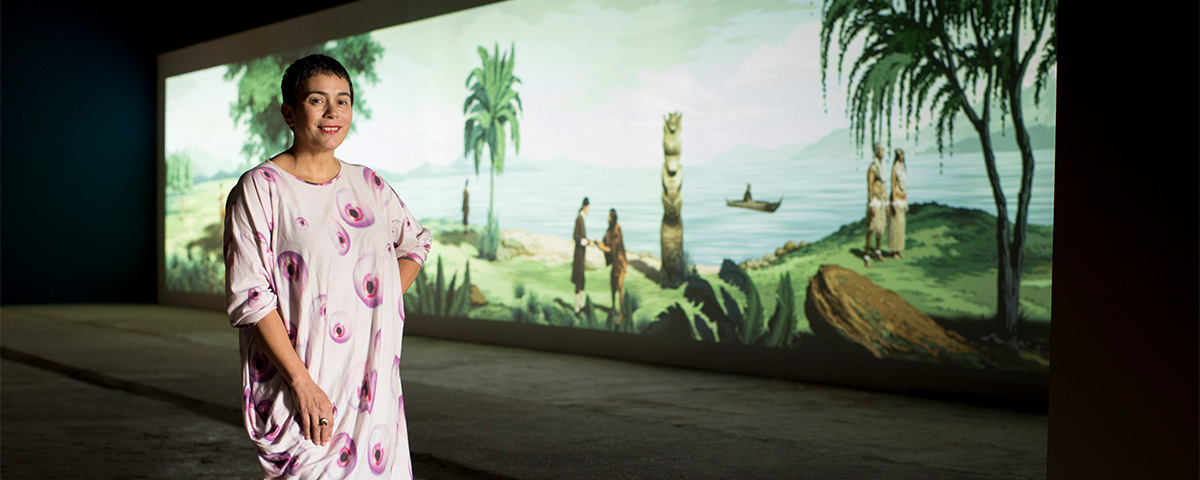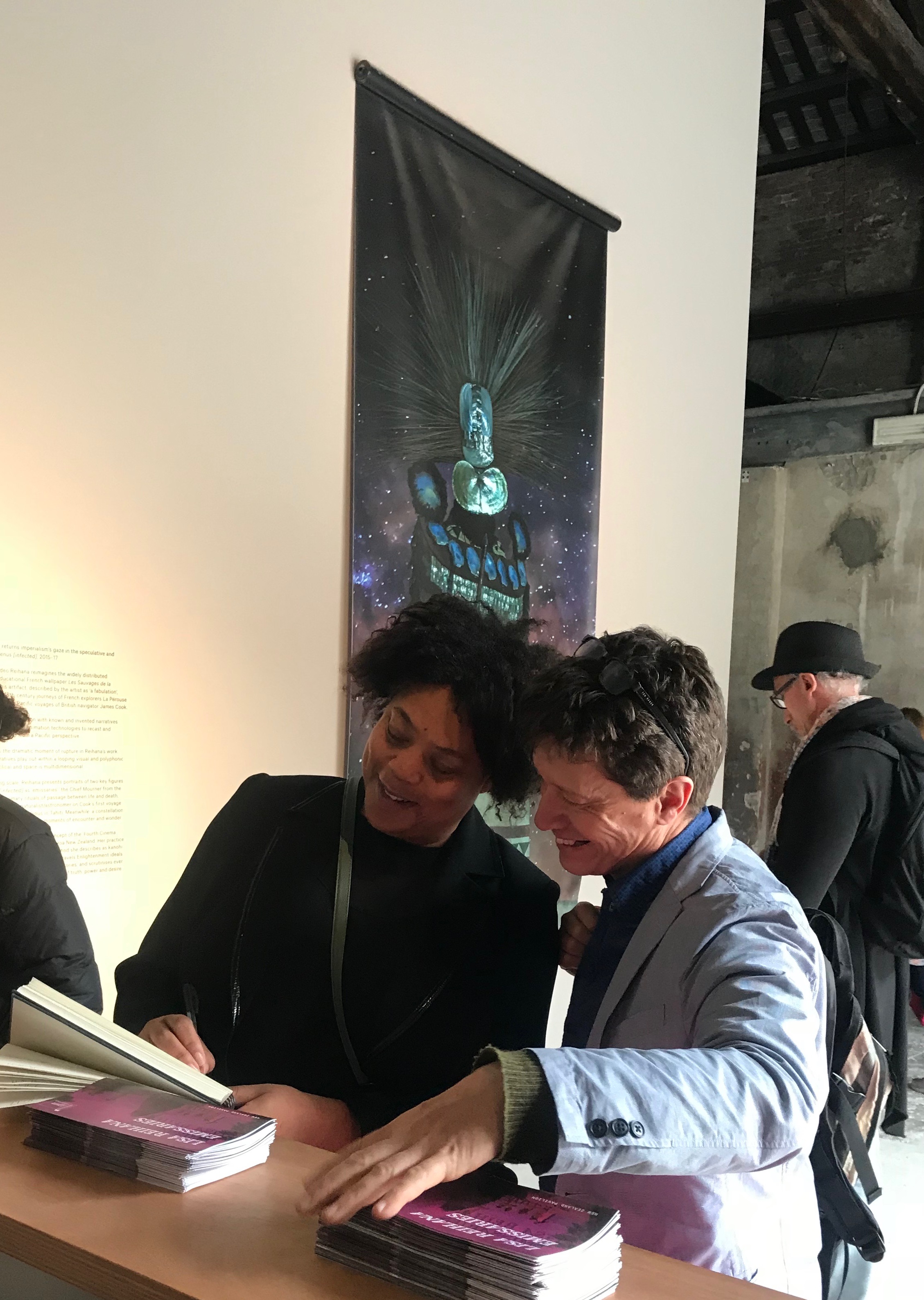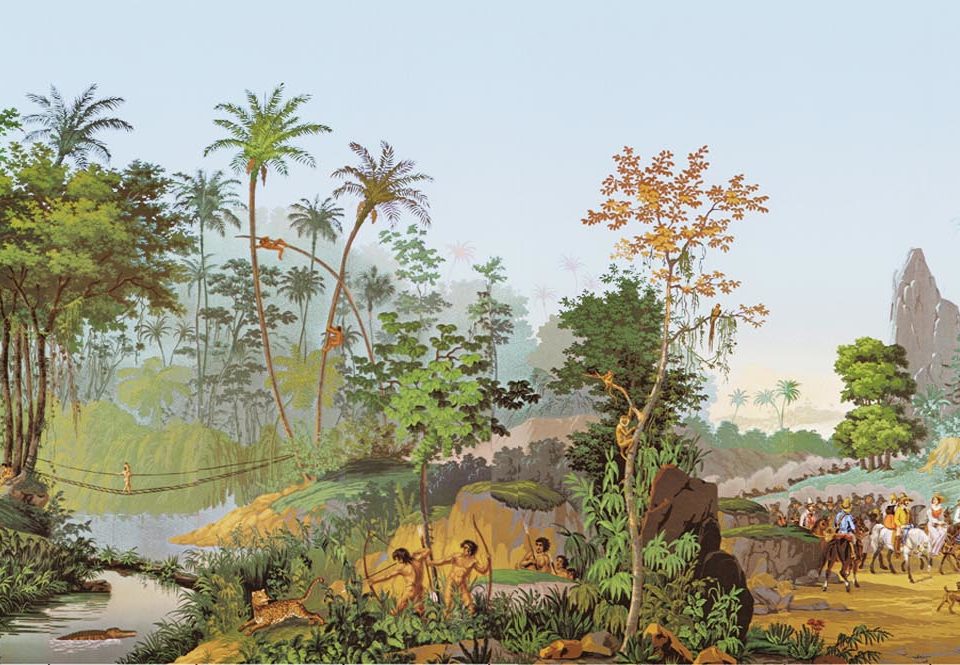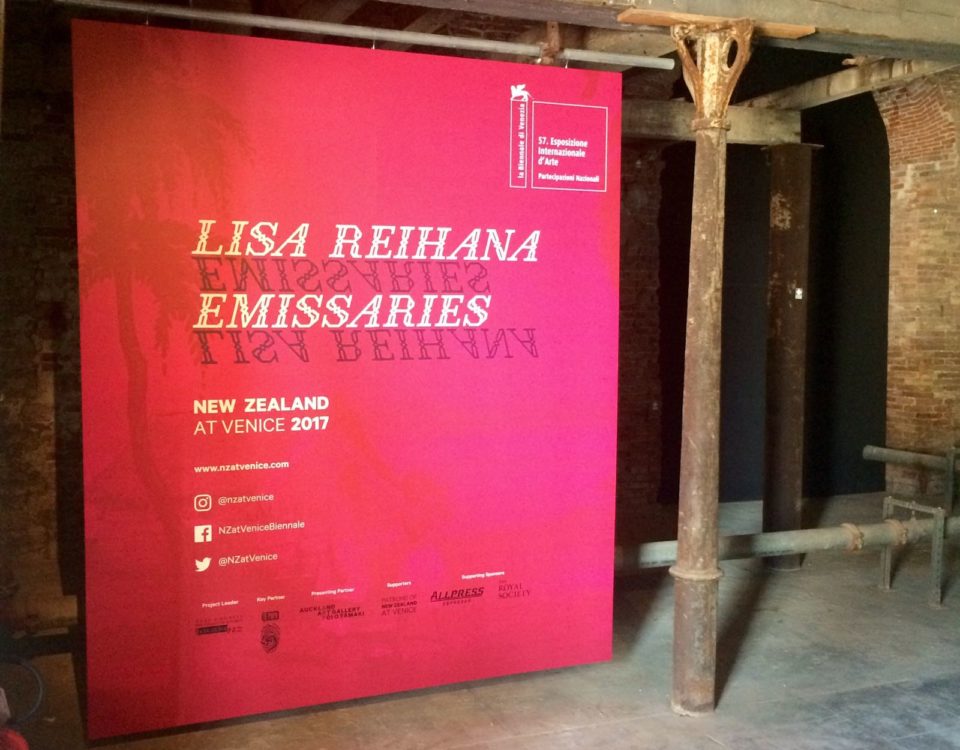![Still taken from video artwork “in Pursuit of Venus [infected]” depicting Joseph Banks in conversation with a Tahitian Chief and wife, meanwhile an agitated English sailor receives a traditional Polynesian tattoo.](https://www.nzatvenice.com/wp-content/uploads/2016/08/IPOV-web-1.jpg)
Lisa Reihana and Rhana Devenport in conversations at Allpress Studio
February 1, 2017
New Zealand’s pavilion opens in Venice with ‘Lisa Reihana: Emissaries’
May 10, 2017Global arts and science unite in unique sponsorship for Lisa Reihana exhibition at Biennale Arte 2017 in Venice
![Captain James Cook and his John Shelton clock – Lisa Reihana, detail in Pursuit of Venus [infected] 2015–17 Ultra HD video, colour, sound, 64 min.](https://www.nzatvenice.com/wp-content/uploads/2017/02/in-Pursuit-of-Venus-infected-2015-17_Lisa-Reihana_Cook_2_Veniceweb-1200x480.jpg)
Captain James Cook and his John Shelton clock – Lisa Reihana, detail in Pursuit of Venus [infected] 2015–17 Ultra HD video, colour, sound, 64 min.
The world’s most eminent scientific academy is supporting New Zealand’s presentation by Lisa Reihana at the Biennale Arte 2017 in Venice.
The Royal Society UK – which played a vital role in Aotearoa New Zealand’s early history – is sponsoring Lisa Reihana: Emissaries in a partnership that echoes support for explorations made nearly 250 years ago.
Founded in 1660, the Royal Society is the UK’s national academy of science. It backed the world-changing Pacific voyages of English navigator Captain James Cook, including the first voyage of the Endeavour with Joseph Banks – the ambitious global scientist who subsequently presided over the Royal Society for 42 years.
“The connection between the Royal Society and Aotearoa New Zealand is longstanding and profound,” says New Zealand at Venice Commissioner, Alastair Carruthers CNZM.
“From the moment it sponsored the measurement of the Transit of Venus and the subsequent mapping of our country, with astonishing accuracy, the Royal Society has been connected to New Zealand, Venus, Polynesia, the Pacific Ocean and our tangata whenua, Māori.”
Now, the Royal Society has given artist Lisa Reihana access to some of the most precious artefacts in its collections – including observational instruments Cook used during his ultimately fateful expeditions into the Pacific.
The image, winding and ticking of Cook’s much-travelled John Shelton clock, used on his second and third voyages, has been subtly integrated into the scenes and soundscape of in Pursuit of Venus [infected] (2015-17), the cinematic centrepiece of Reihana’s exhibition.
Dr Julie Maxton, Executive Director of the Royal Society, says, “The Royal Society has one of the most important scientific heritage collections in the world, which is used to engage the public in the past, present and future of science.
“The Society is delighted to be supporting this project – science and the arts represent some of the greatest triumphs of human achievement – and it is a wonderful first for the Society to have some of its precious artefacts used by an artist to create work for one of the world’s most important international exhibitions. This project provides a fascinating insight into what happens when historic objects are taken out of their usual context and reinterpreted in fresh and exciting ways for new audiences.”
Chairman of the Arts Council of New Zealand Dr Dick Grant says, “We are very thankful to the Royal Society for their generous contribution towards New Zealand’s participation at the Biennale Arte 2017.”
“Working in partnership with an international institution of this calibre which has deep links to New Zealand’s history, has been invaluable.”
The exhibition, Lisa Reihana: Emissaries, conceived as a meditation on ideas generated by cartographic endeavours and scientific exploration, unravels Enlightenment ideals and philosophy, the colonial impulse, and the distant gaze of power. Reihana’s presentation will showcase New Zealand contemporary art at the 57th International Art Exhibition – La Biennale di Venezia, the premier international arts and culture event since 1895. The New Zealand pavilion will be housed in the Tese dell’Isolotto, one of the oldest buildings in the Arsenale, among many permanent national pavilions. It will include Reihana’s panoramic video in Pursuit of Venus [infected] (2015-17), expanded and augmented with a series of new photographic works. The biennale opens in May 2017.
Follow New Zealand at Venice on Facebook and Twitter
For media enquiries contact: Jasmyne Chung, jasmyne.chung@creativenz.govt.nz
Notes to editors
New Zealand at the International Art Exhibition – La Biennale di Venezia
New Zealand’s arts development agency, Creative New Zealand, funds and manages New Zealand’s presence at the International Art Exhibition – La Biennale di Venezia for the almost seven month duration.
Museum of New Zealand Te Papa Tongarewa is a Key Partner and, for the first time, Auckland Art Gallery Toi o Tāmaki is a Presenting Partner. The New Zealand at Venice patrons generously contribute around a third of the budget for New Zealand’s presentation at the biennale.
The International Art Exhibition – La Biennale di Venezia is widely recognised as the pre-eminent international art exhibition in the world. In 2015 almost 90 countries had a presence and more than 8,000 accredited journalists and 500,000 visitors attended.
An official presence there provides a career development opportunity at the highest level for New Zealand contemporary visual artists. It brings the New Zealand pavilion to the attention of global media, art institutions, experts and gallerists and offers professional development opportunities for the curators, exhibition attendants and team members including the technical, design and artistic contributors to the project.
New Zealand has exhibited at the biennale since 2001. New Zealand artists who have exhibited are: Jacqueline Fraser and Peter Robinson (2001); Michael Stevenson (2003) et al. (2005); Judy Millar and Francis Upritchard (2009); Michael Parekowhai (2011); Bill Culbert (2013) and Simon Denny (2015).
Lisa Reihana, artist
Lisa Reihana (b 1964) completed a Masters in Design from the School of Visual Art and Design, Unitec in Auckland in 2014 and graduated with a Bachelor of Fine Arts from Elam School of Fine Arts, University of Auckland in 1987.
Of Ngāpuhi, Ngāti Hine and Ngāi Tū descent, she lives and works in Auckland.
Reihana’s work has featured in significant museums and major exhibition projects including Global Feminisms at Brooklyn Museum, the Yinchuan Biennale, Havana Biennale, the Noumea Biennale, the Liverpool Biennale, the International Arts Festival at Samstag Museum, Adelaide, the 12th Biennale of Sydney, the Auckland Triennial at Auckland Art Gallery, the 2nd and 4th Asia Pacific Triennial of Contemporary Art at Queensland Gallery of Modern Art, Paradise Now? Contemporary Art from the Pacific at Asia Society Museum, New York, the Amsterdam Film + Media Arts Festival, imagineNATIVE, New Media & Film Festival Toronto, The Trickster at Gyeonggi Museum of Modern Art, South Korea, and Toi Toi Toi at Museum Fridericianum, Kassel.
Reihana was made an Arts Laureate by the New Zealand Arts Foundation in 2014. She was shortlisted for the Signature Art Prize at the Singapore Art Museum in 2014 for in Pursuit of Venus; as well as the Double Take Anne Landa Award, Art Gallery of New South Wales in 2009 and the Walters Prize at the Auckland Art Gallery Toi o Tāmaki in 2008, both for Digital Marae. She was shortlisted for the 2016 Walters Prize for in Pursuit of Venus [infected] (2015).
Rhana Devenport, curator
Rhana Devenport is director of Auckland Art Gallery Toi o Tāmaki. She was director of Govett-Brewster Art Gallery (2006-2013) and held senior positions with the Biennale of Sydney (2005-2006), Artspace NZ (2005) and the Sydney Festival (2004) and was Senior Project Officer for the Asia Pacific Triennial with the Queensland Art Gallery (1994-2004). Her curatorial and publishing projects include projects with Peter Robinson, Fiona Pardington, Judith Wright, Nalini Malani, NS Harsha, Alfredo and Isabel Aquilizan, Song Dong, Yin Xiuzhen, Zhang Peili, Lee Mingwei and Lisa Reihana.
Royal Society
The Royal Society is a self-governing Fellowship of many of the world’s most distinguished scientists drawn from all areas of science, engineering, and medicine. The Society’s fundamental purpose, as it has been since its foundation in 1660, is to recognise, promote, and support excellence in science and to encourage the development and use of science for the benefit of humanity.
Among its former Fellows were James Cook, Joseph Banks, Matthew Flinders and many other scientists and explorers. The Society retains manuscripts and objects relating to their historic voyages and to the journeys made by islanders who returned to London with them. Cook’s historic astronomical observations of the Transit of Venus – the purpose of the Endeavour voyage – led to further travels in HMS Resolution and HMS Adventure, ships which took on board Royal Society clocks and instruments, as well as people.
Timepieces were used both as an aid to navigation and as a means for the precise recording of astronomical events. The John Shelton regulator clock made c.1760 and featured in the Lisa Reihana work is one of the surviving instruments sent by the Royal Society into the Pacific with Cook.
For further information please visit the Royal Society website, Twitter or Facebook.
The Cook artefacts are profiled in the popular YouTube video series, Objectivity, and feature the Society’s Head of Library and Archives, Keith Moore:



